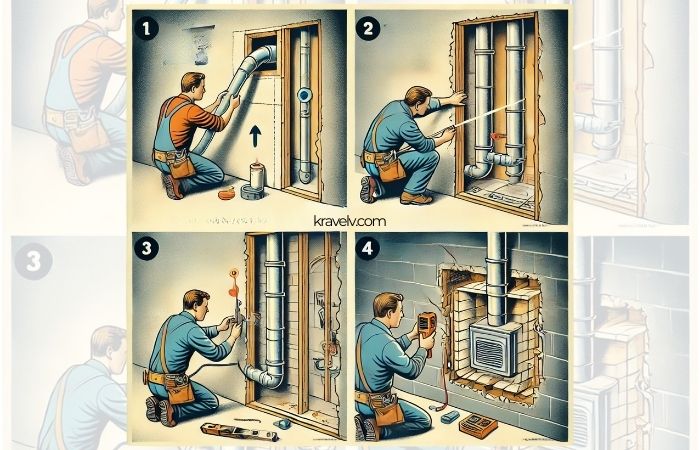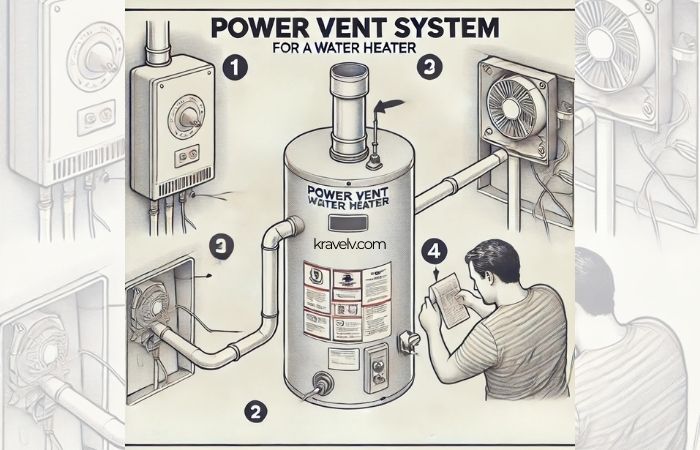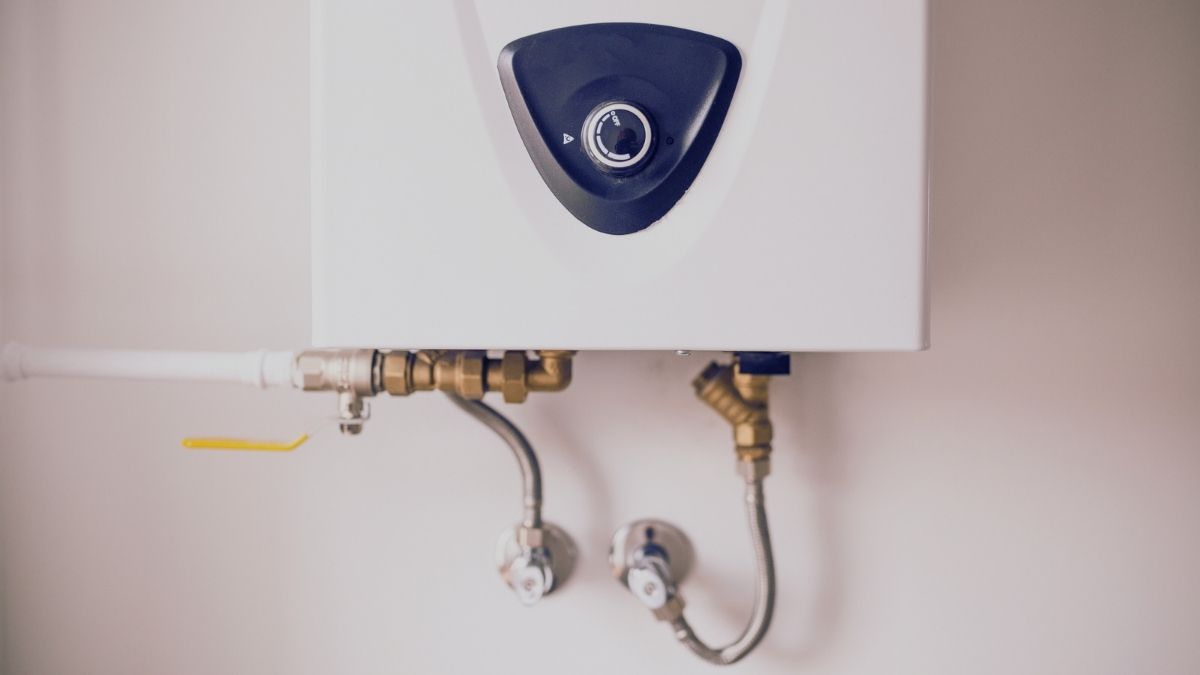Last Updated on February 24, 2025 by Kravelv Spiegel
If your home doesn’t have a chimney, you might be wondering how to safely vent your hot water heater. Proper venting is crucial for removing harmful gases like carbon monoxide while ensuring efficient operation. Thankfully, there are several alternatives to traditional chimney venting that are safe, effective, and easy to install.
Key takeaways:
- Proper venting of a hot water heater is essential for safety and efficiency.
- Alternative venting methods include direct venting, power venting, and ventless heaters.
- Choosing the right venting option depends on space, budget, and electricity access.
- Regular maintenance prevents blockages, ensures proper airflow, and enhances safety.
Understanding Water Heater Venting
The Purpose of Venting
Venting removes dangerous byproducts of combustion, such as carbon monoxide and moisture, keeping your home safe. Without proper venting, these gases can accumulate, posing serious health risks.
Types of Hot Water Heaters
- Gas Water Heaters – Require venting to expel combustion gases.
- Electric Water Heaters – Don’t require venting.
- Tankless Water Heaters – Can be vented directly or use power venting.
Alternative Venting Options
Direct Venting
Direct venting is an effective solution that uses a two-pipe system to pull in fresh air from outside while expelling exhaust gases through a separate pipe. This method is ideal for homes that lack a chimney and helps improve indoor air quality by ensuring combustion gases do not circulate indoors. Direct venting typically requires installation through an exterior wall and is known for its efficiency, as it does not rely on indoor air for combustion.
Power Venting
Power venting systems use an electric blower to force exhaust gases out through a vent pipe, allowing greater flexibility in installation. Unlike direct venting, power venting does not require an exterior wall nearby, making it ideal for interior installations. However, since it depends on electricity, a power outage could disrupt operation. Power vent systems reduce backdraft risks and improve efficiency but may require additional energy costs due to the blower fan.
Ventless Water Heaters
Ventless or tankless water heaters eliminate the need for external venting altogether by utilizing high-efficiency combustion technology. These systems are designed to burn fuel so efficiently that they produce minimal emissions, making them a good option for homes where venting is difficult or impossible. While ventless models are compact and energy-efficient, they must meet local building codes and be installed in well-ventilated areas to ensure safety.
Installing a Direct Vent System
- Choose a location near an exterior wall.
- Install the venting pipes according to manufacturer instructions.
- Ensure proper sealing to prevent gas leaks.
- Test for safe operation.

Installing a Power Vent System
- Select a suitable location with an electrical outlet.
- Attach the power vent blower to the heater.
- Run the vent pipe to an exterior wall or roof.
- Secure and test the system.

Converting a Standard Vent Heater
If you already have a water heater that relies on a chimney, you may need an adapter kit or a new unit to switch to direct or power venting.
Choosing the Right Venting Option
- Space Availability – Direct venting requires access to an exterior wall.
- Electricity Access – Power venting needs an outlet.
- Budget – Direct venting is usually more affordable than power venting.
Maintenance Tips
- Clean vent pipes annually.
- Check for blockages or corrosion.
- Ensure proper airflow and fan operation in power vented systems.
FAQs
1. Can I install a ventless water heater instead?
Yes, but only if it meets local building codes and has proper safety certifications.
2. How do I know if my venting is working properly?
Check for proper airflow, listen for unusual noises, and ensure there are no gas leaks.
3. Do power vented heaters require electricity?
Yes, power vented systems need electricity to operate the fan.
4. Is it expensive to install a direct vent system?
It depends on your home layout, but it’s generally more affordable than power venting.
5. What happens if I don’t vent my water heater properly?
Poor venting can lead to carbon monoxide buildup, which is extremely dangerous.
Final words
Venting a hot water heater without a chimney is entirely possible with the right approach. Whether you choose direct venting, power venting, or a ventless option, proper installation and maintenance are key to safety and efficiency. By selecting the best method for your home, you can enjoy a reliable hot water supply without worrying about harmful gases.

